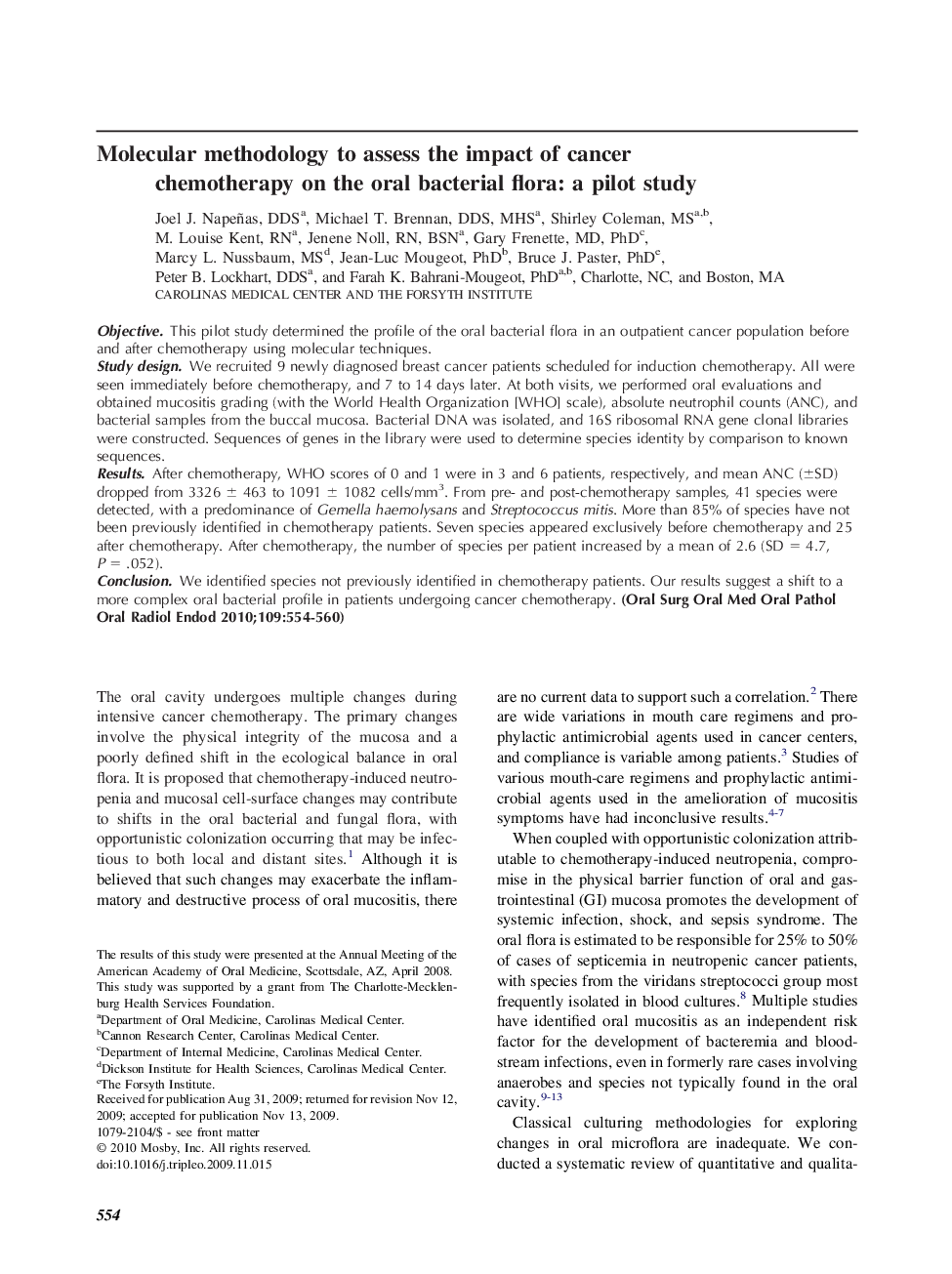| Article ID | Journal | Published Year | Pages | File Type |
|---|---|---|---|---|
| 3167583 | Oral Surgery, Oral Medicine, Oral Pathology, Oral Radiology, and Endodontology | 2010 | 7 Pages |
ObjectiveThis pilot study determined the profile of the oral bacterial flora in an outpatient cancer population before and after chemotherapy using molecular techniques.Study designWe recruited 9 newly diagnosed breast cancer patients scheduled for induction chemotherapy. All were seen immediately before chemotherapy, and 7 to 14 days later. At both visits, we performed oral evaluations and obtained mucositis grading (with the World Health Organization [WHO] scale), absolute neutrophil counts (ANC), and bacterial samples from the buccal mucosa. Bacterial DNA was isolated, and 16S ribosomal RNA gene clonal libraries were constructed. Sequences of genes in the library were used to determine species identity by comparison to known sequences.ResultsAfter chemotherapy, WHO scores of 0 and 1 were in 3 and 6 patients, respectively, and mean ANC (±SD) dropped from 3326 ± 463 to 1091 ± 1082 cells/mm3. From pre- and post-chemotherapy samples, 41 species were detected, with a predominance of Gemella haemolysans and Streptococcus mitis. More than 85% of species have not been previously identified in chemotherapy patients. Seven species appeared exclusively before chemotherapy and 25 after chemotherapy. After chemotherapy, the number of species per patient increased by a mean of 2.6 (SD = 4.7, P = .052).ConclusionWe identified species not previously identified in chemotherapy patients. Our results suggest a shift to a more complex oral bacterial profile in patients undergoing cancer chemotherapy.
